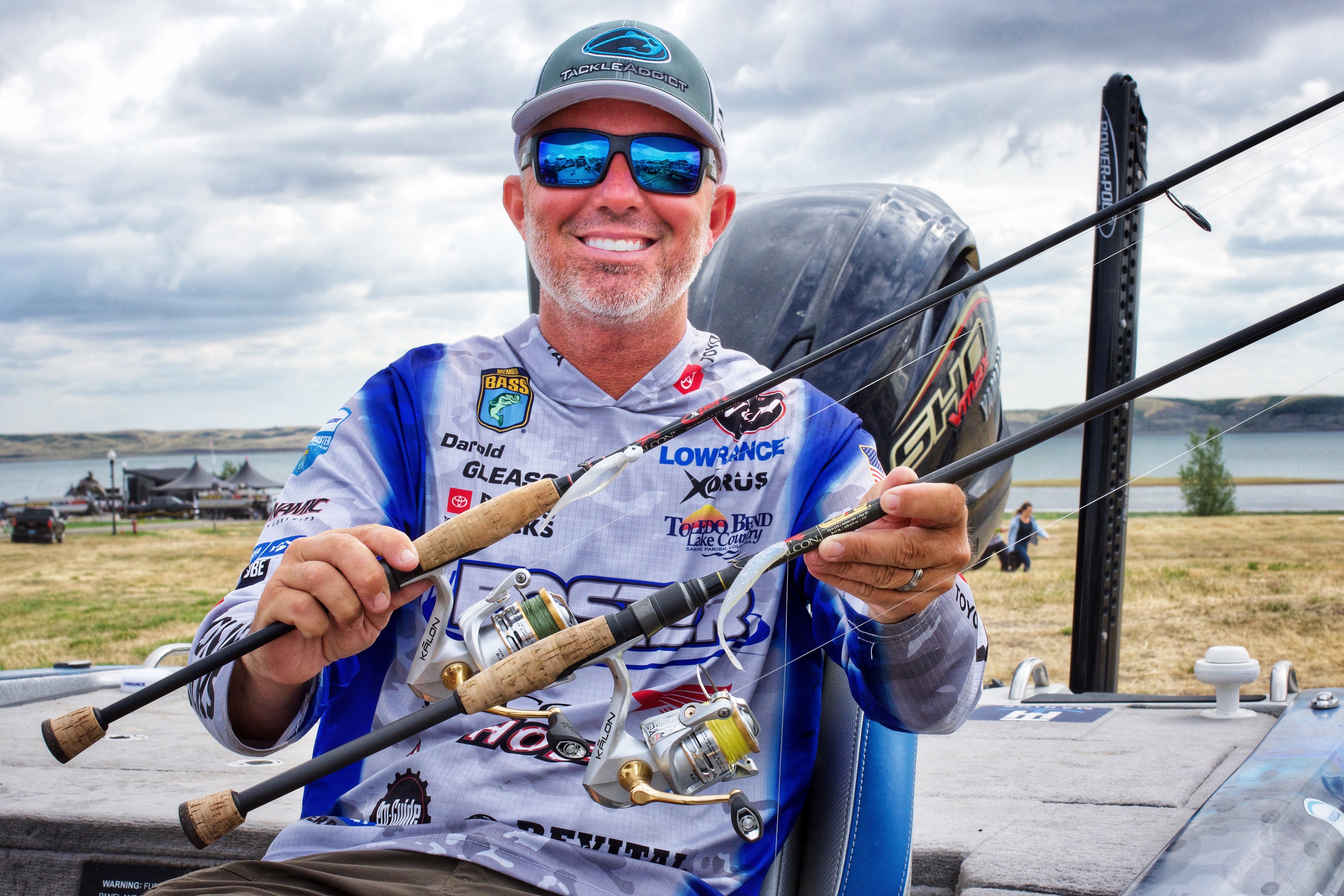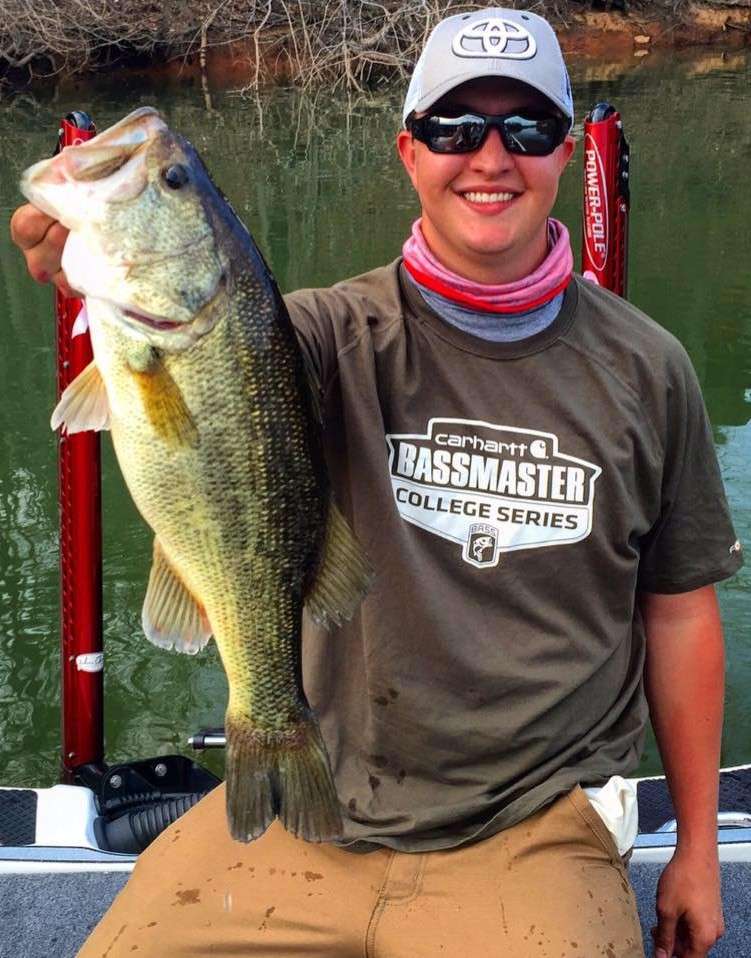
Figuring out how to find and catch five keeper smallmouth a day on an immense fishery like Lake Oahe is tricky enough. When the fish you do find favor a gypsy life cycle, it adds a whole new element to an already difficult task. That’s the puzzle many anglers faced for the Guaranteed Rate Bassmaster Elite on Lake Oahe.
Part of the allure of fishing for bass in South Dakota is that they don’t receive the kind of fishing pressure that bass see in the south. Which would lead you to believe Oahe smallmouth would be easier to catch than the average fish, but that’s not necessarily been the case for Elite Series pros this week. And if you ask the anglers why, many of them will tell you it’s partially due to these fish being “pelagic”.
The definition of pelagic is listed as, “of, relating to, or living or occurring in the open sea.” Yamaha Outboards pro Darold Gleason is one of many pros successfully targeting smallmouth labeled as pelagic on Oahe and provided some insight on how the term pelagic relates to bass fishing.
“These fish are what I would call roamers,” Gleason said. “You hear people call it pelagic behavior but what this refers to is the fact these Oahe smallmouth don’t necessarily relate to any type of cover or specific depth range. It seems like they spend most of their day swimming, and swimming fast, chasing bait fish or relocating to the next area they use to feed.”
Fish with this trait are notoriously difficult to catch consistently. Instead of patiently milking a select few spots to catch his fish, Gleason has had to move with them. We picked the longtime Toyota Bonus Bucks participant’s brain for any tips to help the average angler catch pelagic smallmouth.
“The only way I’ve been successful this week is by chasing these fish like I used to have to chase Randi back in high school,” Gleason said jokingly about his supportive and loving wife Randi.
Forward facing sonar
Gleason’s first and perhaps most crucial tool for catching smallmouth with a tendency to roam has been keeping one eye locked on his forward facing sonar (FFS) screen on the bow of his boat.
“With my Lowrance Active Target I can see exactly where the fish are positioned in the water column and individually pick them off,” Gleason explained. “Forward facing sonar has been an absolute game changer for catching pelagic fish, especially smallmouth.”
Instead of using a jerkbait or damiki style rig, Gleason has been locating fish with his FFS and then pitching a ½-ounce drop shot at them. If he sees the fish follow his bait to the bottom, he readies himself for a hook set.
2D sonar
While forward facing sonar is an incredible tool, it’s also an expensive technology. Fortunately, Gleason has more tips for catching pelagic fish if you don’t have the ability to take advantage of FFS.
“It doesn’t matter where you are in the country, smallmouth are curious and will sometimes swim up to the boat to kind of check you out,” Gleason said. “When they do this, you can see them on your ‘old school’ 2D sonar. A lot of times you can catch those fish just by dropping your bait straight down to them, but more than that it will key you in on the depth range those fish want to be in if you pay attention.”
Gleason is fishing over primarily 30 to 50 feet of water on Oahe, but he said that most of the fish he’s catching are spending most of their time only 10-feet below the surface. He was clued into this detail by his traditional 2D sonar in practice and it’s helped him catch several key fish this week.
Good pair of sunglasses / keep your head on a swivel
The former Toledo Bend fishing guide’s final tip simply revolves around making sure you’ve got a good pair of polarized sunglasses on your face and being vigilant of your surroundings. Gleason relies on Costa Sunglasses Fantail frames with a blue mirror lens for most of his days on the water.
“A few fish I’ve weighed in I literally caught sight fishing in 30 feet of water,” Gleason admitted. “Now, they certainly aren’t spawning but occasionally you see an individual fish or small group of them swimming near the surface. When you’re able to pick them out like this, they’ve been very catchable. Oahe isn’t a super clear fishery and we’ve had to deal with lots of waves this week, so having a quality pair of sunglasses is critical.”
Heed this advice and give Gleason’s tips a try if you’ve been dealing with roaming or pelagic bass and are struggling to connect with them.





